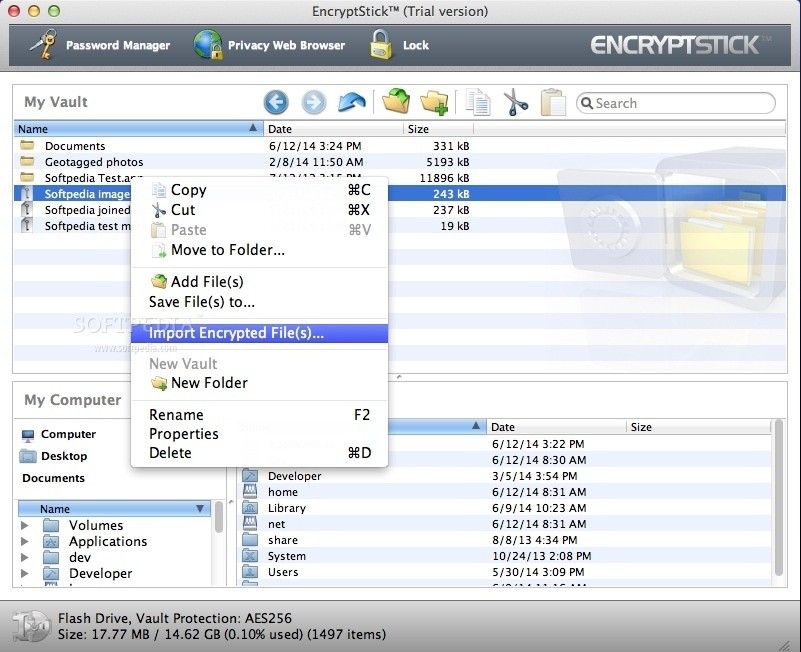
- #ENCRYPTSTICK ALTERNATIVE PASSWORD#
- #ENCRYPTSTICK ALTERNATIVE FREE#
- #ENCRYPTSTICK ALTERNATIVE WINDOWS#
Just click the SanDiskSecureAccessV3_win, enter your password, and hope you aren’t dooped again. Don’t mess with the other files, they’re there “for your security, so that everything will be okay, and the situation is contained”.
#ENCRYPTSTICK ALTERNATIVE FREE#
BestBuy gave me some free e-bags when they continually screwed the pooch. Keep your usb, ssd, etc in an electrostatic bag, then a ziplock, then a fireproof box (or buy a safe deposit box and keep data off-site but rely on, and pay, the bank).

Now you’ve got SanDisk, and some other brand, each with your data in case one is targeted. Perhaps buy an alternative brand to SanDisk, and back up to them as well. Tips: Don’t ever love a company, it’ll never love you back. This time it seems to be linked and synced…until the next time it isn’t of course…or until it’s “no longer supported”, as if it was in the first place. At least you might learn a little.ĭo a final “repair”. That’s right, delete all of the index.dat files as you’d like to delete Sandisk (or others in bed together) from your life permanently for this annoying tactic to bridge you into the cloud and thereby make it easier for you to lose all data (and a fortune with monthly payments) to nefarious backroom deals regarding “security” and “privacy”. I’ve had index.dat, indexdat (without the “dot” as mentioned elsewhere), index.dat (2), index.dat (3), etc etc.ĭELETE them all. I found my index.dat file by following this rabbit hole: clicking the “SanDiskSecureAccess Vault” file with a vault icon -> scrolling to the bottom -> that’s where the index.dat lives (rather, repeatedly dies). Try this, it worked for me, probably, until the next time it doesn’t…using version 3…maybe works with version 2?Įach time you do a “repair” it basically creates a new index.dat file. idx.bak files with the names of the newly generated system files. idx file with the name you copied from the new. Go to the vault / system files and rename the old. idx file (the file name, not the file itself) Go to the temporary location and copy only the file name from the.


Once you’ve copied the two new files to a temporary location delete the originals from the system files folder on the flash drive. Looking at the date stamps of the files, 2 will be older and 2 will be newer (you can also check on the old write protected drive to confirm the names of the older files, the older files contain the encryption information needed however the file name is associated with the previous drive we will need to rename the old files)Ĭopy the 2 newer files and paste them into any temporary location outside of the flash drive (i.e… desktop)
#ENCRYPTSTICK ALTERNATIVE WINDOWS#
Open the vault folder on the new drive via windows explorer, navigate to the system files folder, you should see several files, among them are two sets of "USB Flash Drive-XXXXXXXXXXXXXXX.idx and.

#ENCRYPTSTICK ALTERNATIVE PASSWORD#
When it prompts to create a new vault go ahead and create a new vault with the exact same password as the old vaultĮncrypt any file in the new vault (this will generate two new system files) Ĭopy the vault and secure access application from the write protected drive over to the new drive There are some steps you can try in order to recover the vault files.


 0 kommentar(er)
0 kommentar(er)
